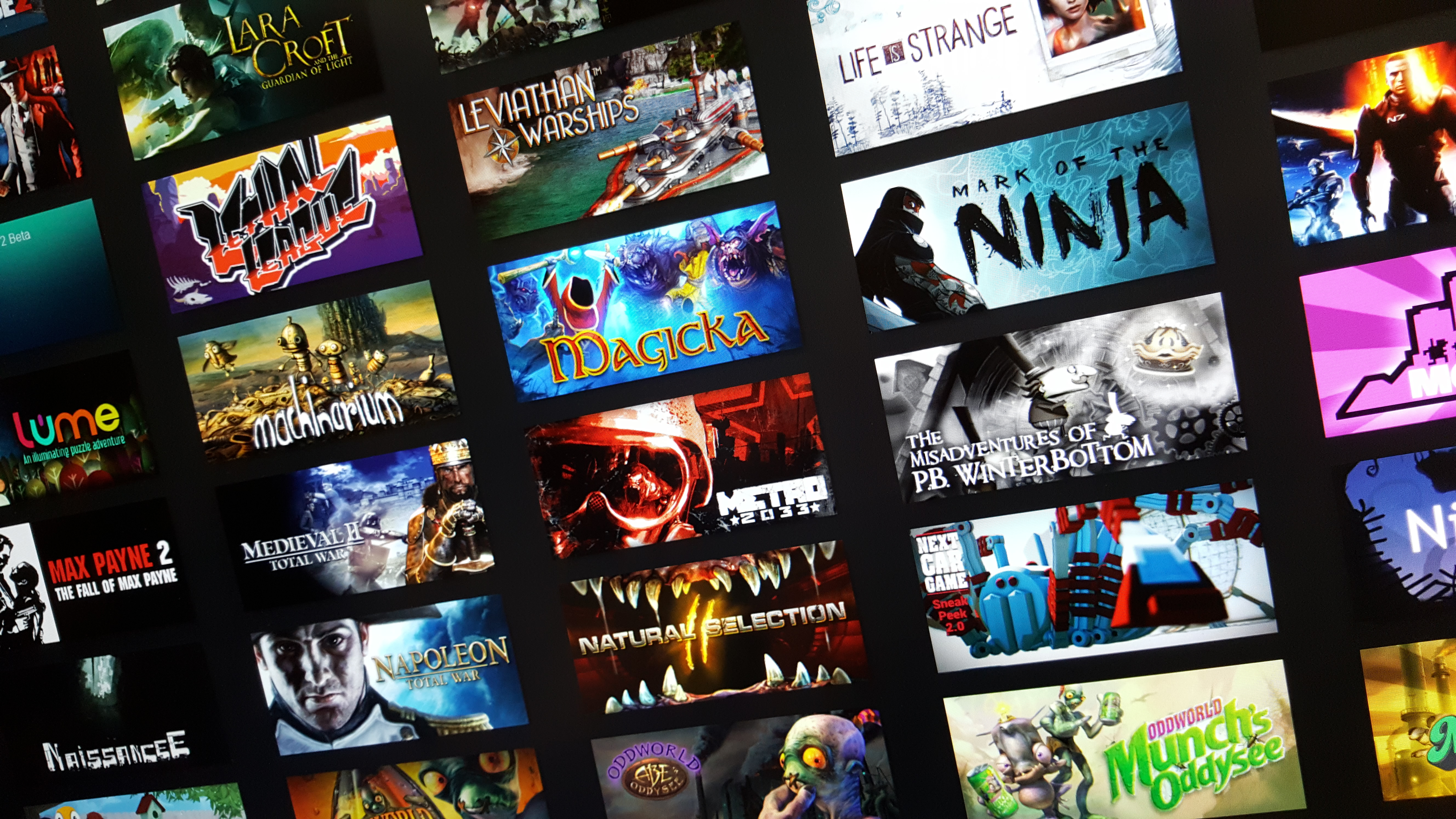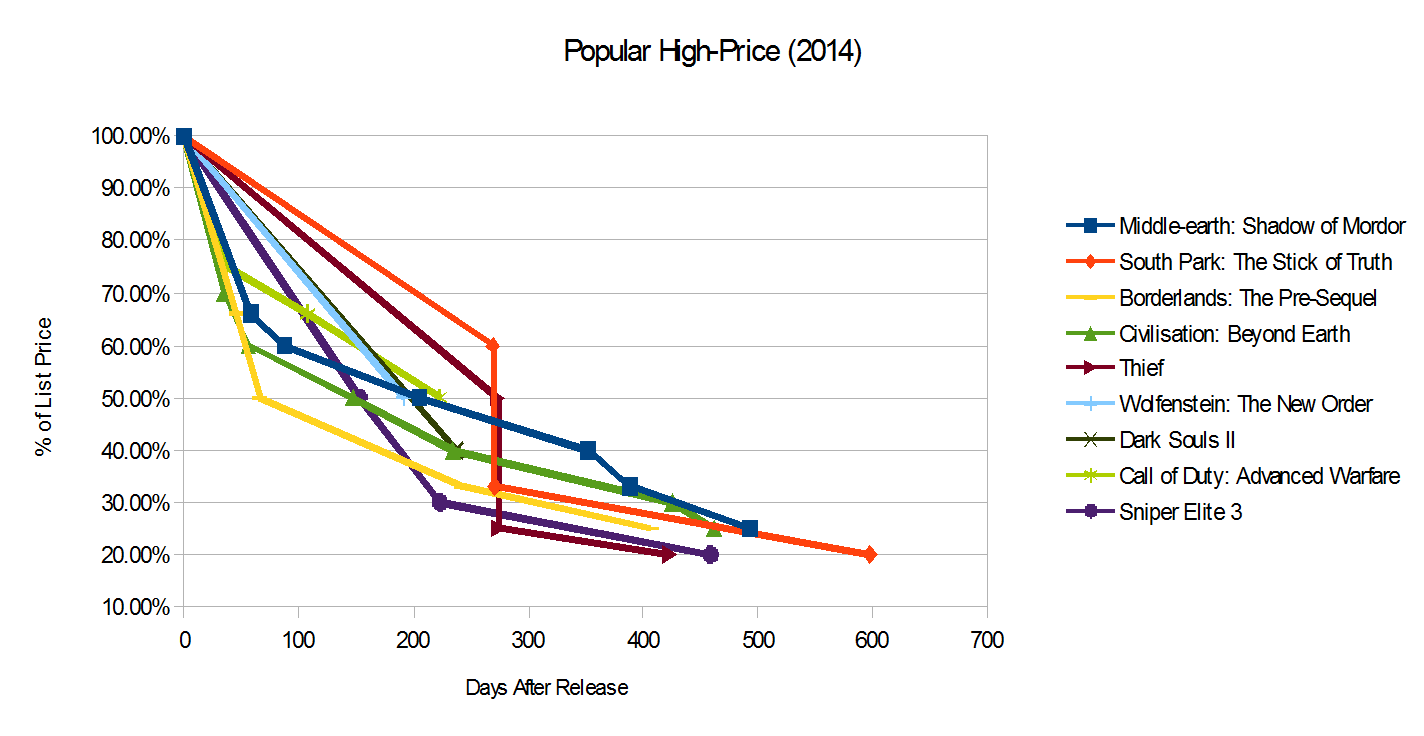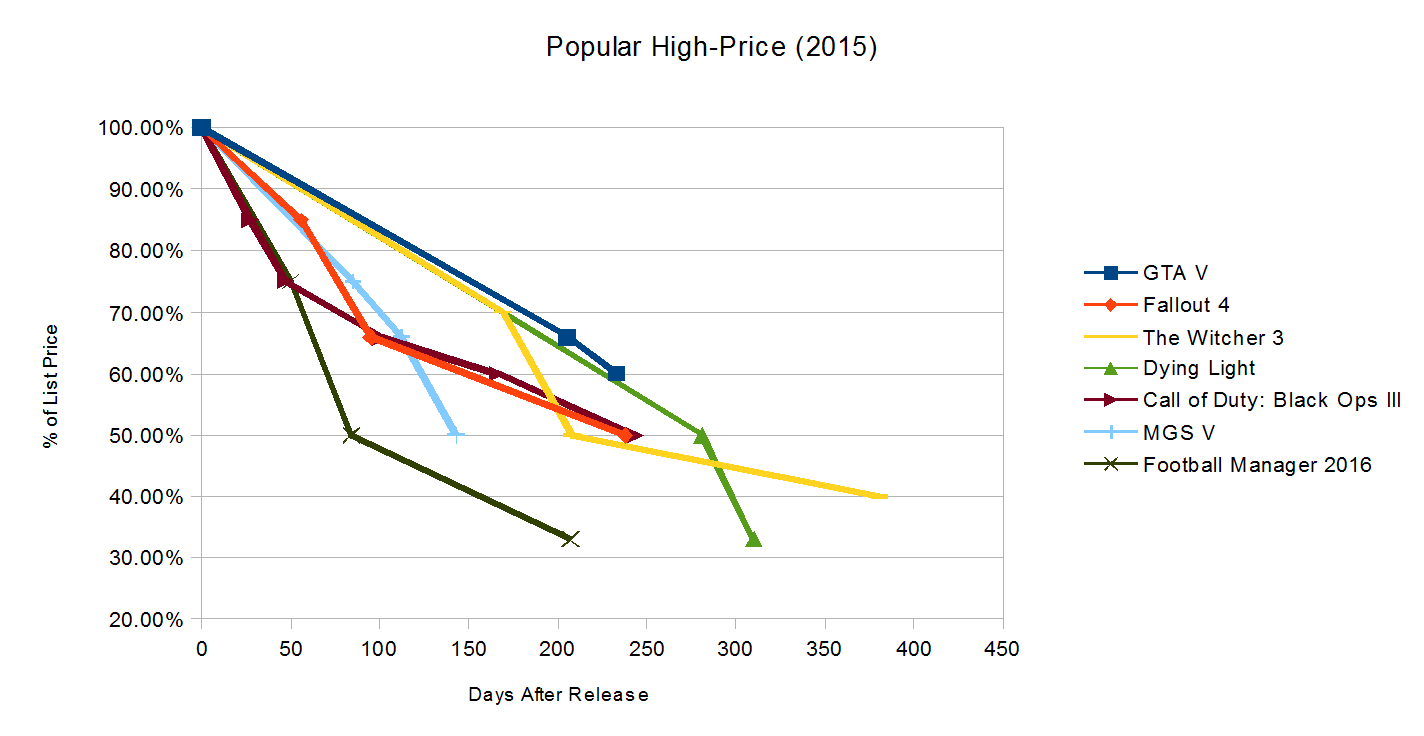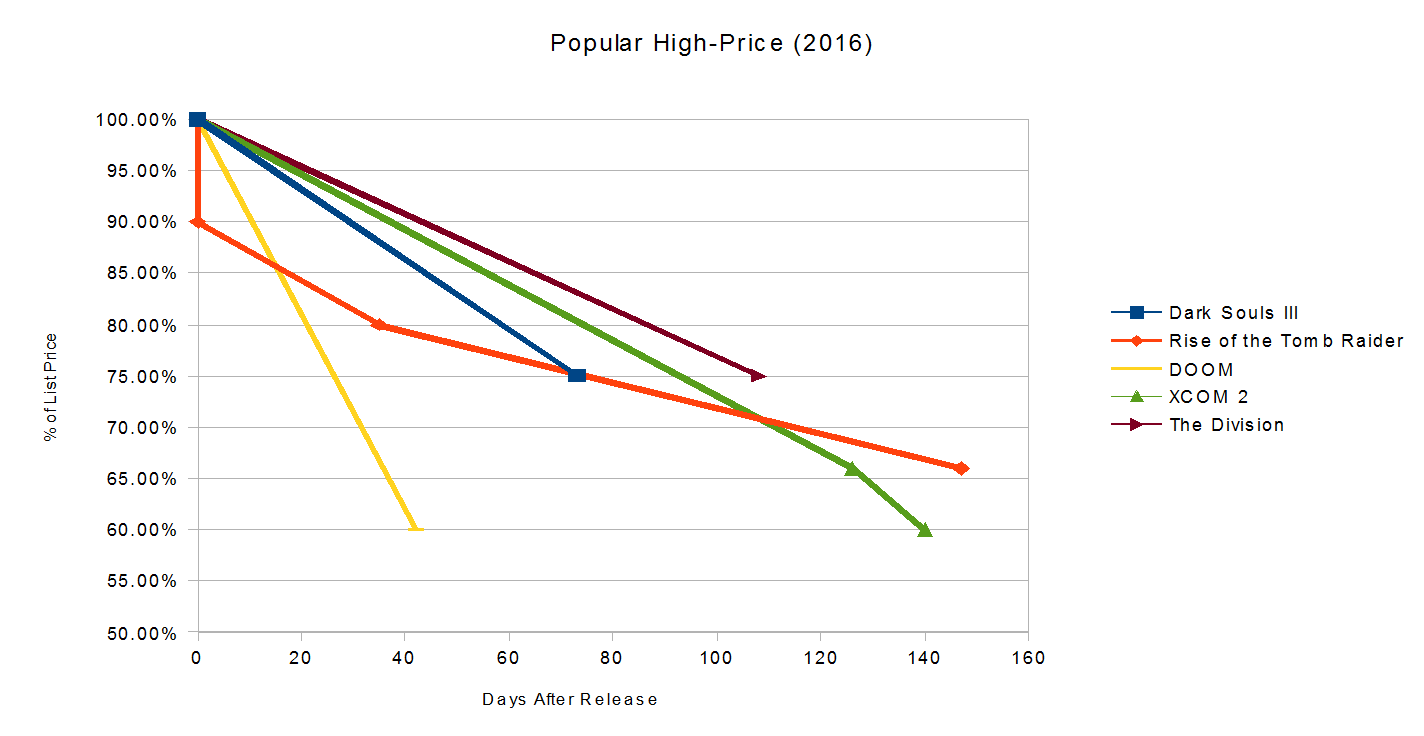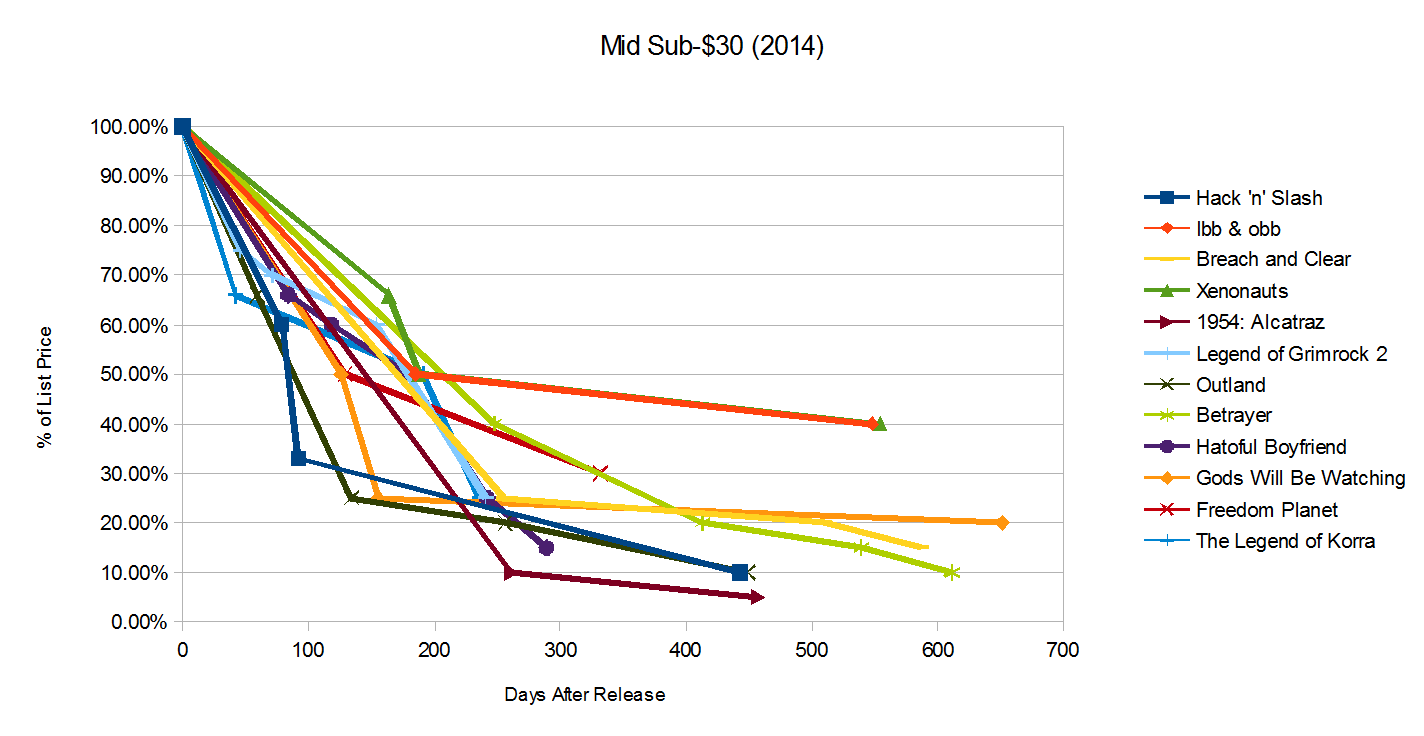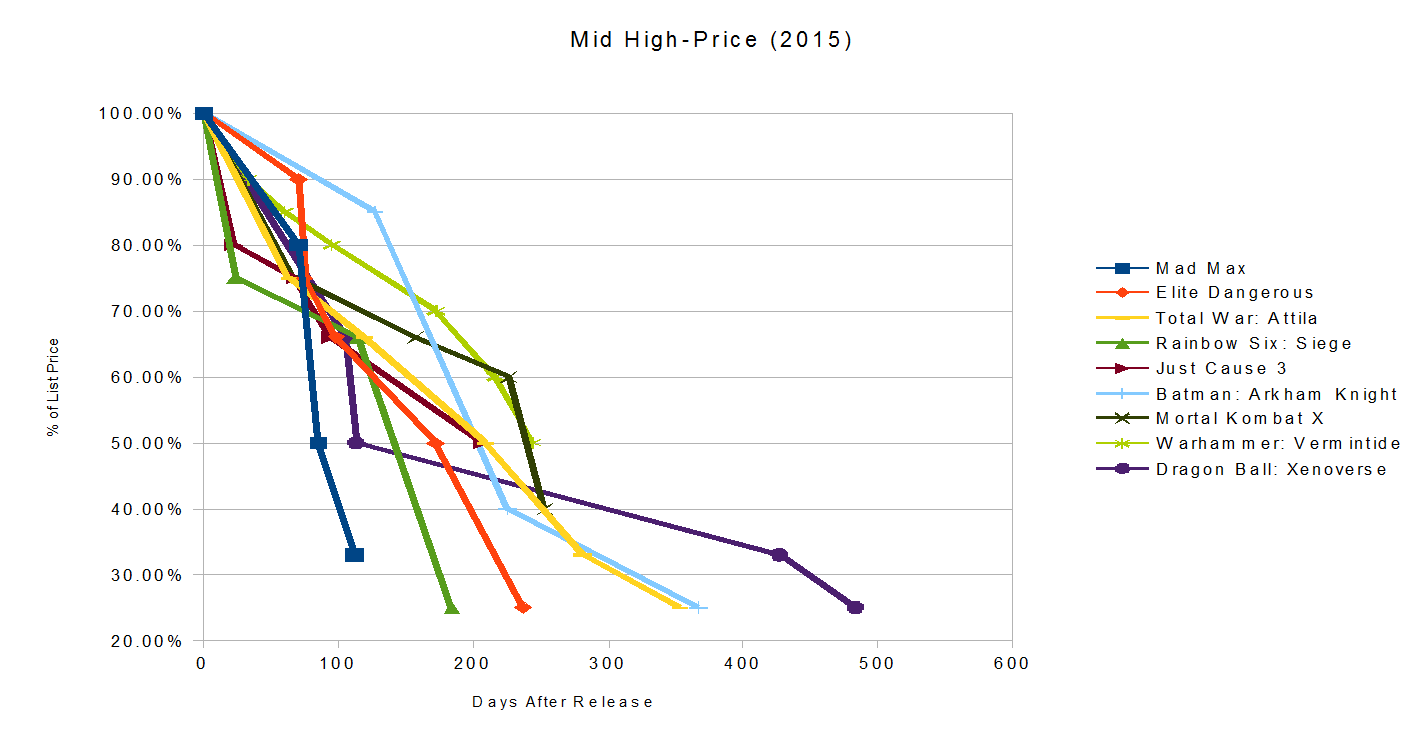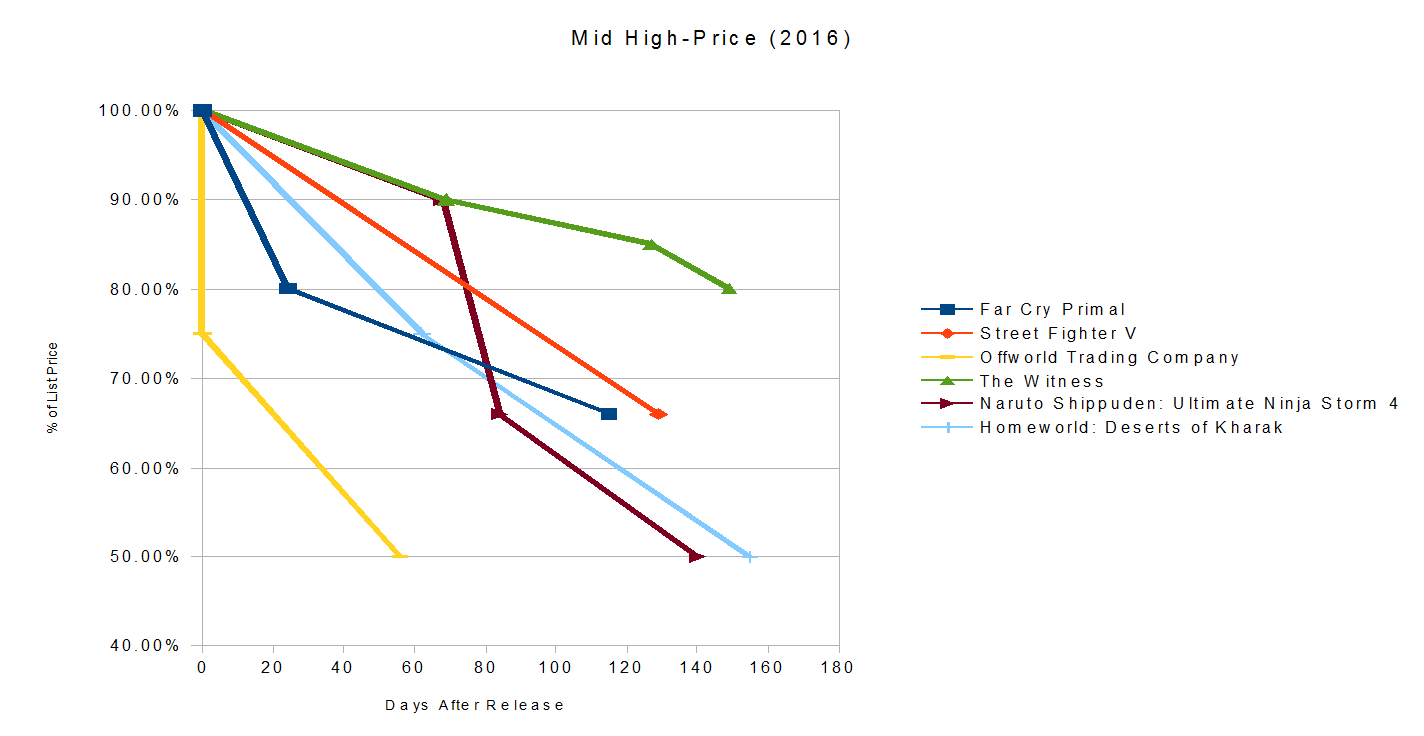How long does it take games to be cheap on Steam?
We dug through years of Steam sale data to determine how quickly most games hit 33%, 50%, and 75% off.
Seven months. That's about how long it'll take for this year's biggest games to hit a 50 percent discount. Sometimes it happens faster; it took Deus Ex: Mankind Divided only about three months for a Steam sale to cut its price in half. For some games, it takes a bit longer—Grand Theft Auto 5 lasted nearly a year and a half. But if half price is your magic number for buying a new game, expect to wait about seven months for it to enter your sights.
How do we know this? By digging into the last few years of pricing data on Steam, we found a number of clear trends regarding the average time-to-discount across hundreds of games. After grouping games according to price and popularity, consistent patterns emerged, and from these we calculated a few handy rules to keep in mind next time a new release threatens to drain your Steam Wallet.
This article was originally published in 2016 and has been updated to correspond with the latest Steam Summer Sale.
What we learned
Popular big-budget AAA games get a 50% discount after an average of 7 months: expect to wait this long for your Witchers and your Fallouts.
Breakout indie games take a longer 9.2 months to hit 50%, on average: these include your Rocket Leagues and your Undertales, and typically launch at around $20.
The less popular a game is, the faster it will be discounted: for games in the $30+ category, the least commercially-successful dropped in price 60% faster than the bestsellers.
Those are just some quick facts from the data we gathered researching Steam's discounts. Below are charts showing those price changes over time and trends from the past three years as Steam sales have evolved. We've highlighted the most important takeaway from each section of the results.
Keep up to date with the most important stories and the best deals, as picked by the PC Gamer team.
$30+ games with 900,000+ owners on Steam
Games released in 2014
33% discount average: 58 days (median)
Fastest discount: 46 days | Mean average: 71 days | Slowest discount: 108 days
50% discount average: 192 days (median)
Fastest discount: 66 days | Mean average: 180 days | Slowest discount: 273 days
75% discount average: 435 days (median)
Fastest discount: 275 days | Mean average: 410 days | Slowest discount: 493 days
Conclusions: If we take a closer look at 2014's data, we can see that both the 50% and 75% averages are skewed by a single game discounted much faster than the rest: Borderlands: The Pre-Sequel in the case of 50%, and Thief in the case of 75%. By removing these two from our calculations, we get slightly longer, but more consistent estimates that better serve our predictive purposes. For 50%, the mean and median converge at 199 days or 6.5 months. For 75%, our estimate hovers around 460 days, or approximately 15 months.
Games released in 2015
25% discount average: 61 days (mean)
Fastest discount: 47 days | Median average: 50 days | Slowest discount: 85 days
33% discount average: 106 days (median)
Fastest discount: 95 days | Mean average: 128 days | Slowest discount: 205 days
50% discount average: 223 days (median)
Fastest discount: 84 days | Mean average: 200 days | Slowest discount: 281 days
Conclusions: Moving onto 2015, our data follow a similar trend. We can again exclude an atypically swift discount to safeguard our estimate—in this case, it's Football Manager 2016, which hit half price after just 84 days. With it gone, both the mean and median approach a more stable figure of 220 days. Thus, we can expect to wait around 7 months for a top-tier 2015 game to drop from $60 to $30. The half-month (7.7%) difference from 2014's estimate falls within the bounds of expectation, given the size of the data we're working with.
Games released in 2016
Conclusions: We did the bulk of this analysis before the end of 2016, so we don't have the same set of sales data for last year's sales. But what we do have seems to align with previous years. The 33% tier currently sits at an average of 137 days, which isn't too far from 2015's average. Dark Souls 3 and The Division, for example, both hit 50% discounts about eight months after release, not far from the average. Other tiers display greater variance, but given the few data to go on, that's not unexpected.
It's also worth mentioning that, across all three years, the 50% tier is far and away the most popular discount among the highest-selling $30+ games. This not particularly surprising, though, since half price is an immediately appealing and easily calculated selling point for most consumers.
$30+ games with 100K - 900K owners on Steam
Games released in 2014
50% discount average: 153 days (mean)
Fastest discount: 51 days | Median average: 155 days | Slowest discount: 280 days
66% discount average: 269 days (median)
Fastest discount: 45 days | Mean average: 249 days | Slowest discount: 407 days
75% discount average: 333 days (median)
Fastest discount: 171 days | Mean average: 342 days | Slowest discount: 686 days
Conclusions: Here we have a more even distribution among the discount tiers. Compared with the most popular games, we see the average time-to-discount dropping by days, weeks, and even months at the higher tiers.
2014's data are less consistent in this category. Discounts span a wider range of values, with no single value around which the others gravitate. Instead, we find sub-categories within the data that correspond to Steam's Summer and Winter sales dates, and more importantly, to the dates of specific flash sales. These fleeting offers—removed in late 2015—make calculating a practical estimate difficult; nevertheless, as we'll see, the averages support the stronger findings in 2015.
Games released in 2015
25% discount average: 67 days (median)
Fastest discount: 23 days | Mean average: 59 days | Slowest discount: 75 days
33% discount average: 110 days (median)
Fastest discount: 94 days | Mean average: 115 days | Slowest discount: 157 days
50% discount average: 189 days (median)
Fastest discount: 85 days | Mean average: 172 days | Slowest discount: 244 days
75% discount average: 353 days (median)
Fastest discount: 184 days | Mean average: 325 days | Slowest discount: 483 days
Conclusions: The removal of flash sales grants us a better distribution of data in 2015. Again, the 50% tier provides the most consistent data, and by excluding Mad Max's appealing yet anomalous average of 85 days, we get a safe estimate of around 200 days, or 6.5 months to reach half price.
Games released in 2016
Conclusions: While weak on their own, 2016's discount data point to the trends of previous years remaining stable. A 110-day average for the 33% tier gels with the 2015 estimate, and a 140-day median for 50% falls within the bounds of reasonable variance.
On the next page: analyzing the sales data from games that cost less than $30.
